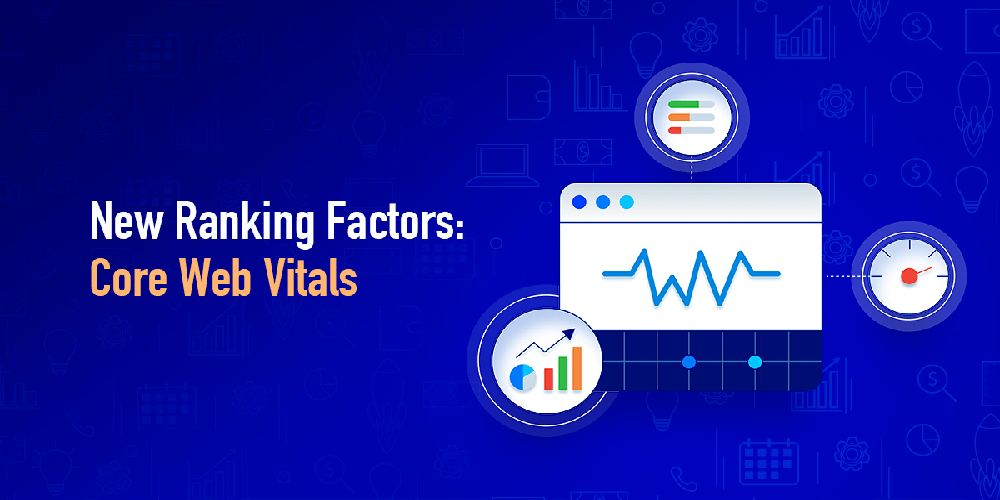
Understanding Core Web Vitals for SEO.
Google places great emphasis on the quality of its users’ user experience. To this end, it requires all platforms on its search engine to meet specific set standards. Google is now adding a new set of standards for user experience in its Core Web Vitals report. This new set of standards will be an integral part of the page experience score once Google implements the changes.
Here is what you need to know about Google’s new Core Web Vitals:
• It is a new updated geared towards improving users’ experience
• It will not go into effect until mid-2021
• It will likely have a major impact on how websites rank on Google search results
• Websites should be prepared to accommodate the new changes

Here is a comprehensive overview of what Core Web Vitals are and how they will affect your website.
Defining Core Web Vitals
Google released its new Web Vitals (it shouldn’t be confused for Core Web Vitals) engine on May 5, 2020. Web Vitals is a new project designed to provide web owners with instructions on signals that are related to users’ experience. The idea is to enable web owners to use these signals to deliver a better user experience.
Google also renamed its speed reports to the current Core Web Vitals report. Shortly after that, Google announced that it would be merging its current user experience rating signals with its new Core Web Vitals metrics, leading to this discussion.
Core Web Vitals is a new report that gives more attention to a site’s performance based on user experience. The new report includes metrics quantifying aspects such as speed, stability, and interactivity, in addition to many of the elements in the speed reports mentioned earlier in Google Search Console.
The new report also contains three main technical metrics:
Largest Contentful Paint
Web users don’t appreciate waiting for what feels like years to see the content they want. This metric is designed to change that.
Largest Contentful Paint (LCP) measures the amount of time taken from when the user requests a site’s URL to when the largest content element on the site becomes visible. The page’s largest element can be any type of content, including text, images, and videos. LCP shouldn’t take more than 2.5 seconds, ideally.
The report will include an aggregated LCP (Agg LCP) value. This value shows the amount of time it takes for 75% of all visits to get to the LCP state.
First Input Delay
Web users expect an immediate response when they interact with the website. It can be a click on a link or a push of a button – they still expect an immediate response.
First Input Delay (FID) measures the amount of time it takes for the browser to respond to the web user’s interaction. The FID time should be less than 100 milliseconds, ideally. This metric is especially important when the user needs to do something on the website, whether it is loading a new page or adding an item to their cart.
The report will also include an aggregated FID (Agg FID) value. This value shows the amount of time it takes for 75% of all visits to get to the FID state.
Cumulative Layout Shift
Some websites’ pages seem to shift while they are loading. This changes factors such as the size and position of content on the page, making it difficult to read.
Cumulative Layout Shift (CLS) measures how much a page’s layout shifts as the page is loading. The scores range from 0 to 1 – 0 indicates zero shift in the page’s layout, and 1 indicates significant shifting. Shifting makes it difficult to read the page, as mentioned, consequently diminishing the user experience. Aggregated CLS (Agg CLS) appears in the report as a value showing the lowest average CLS for 75% of the site’s visitors.
What Core Web Vitals Mean for Your Website
Google is always working towards improving its users’ experience, and Core Web Vitals is the latest project launched towards this end. The Core Web Vitals report will detail each platform’s performance for web owners to consider. More importantly, these values will have an impact on each website’s SEO ranking on Google search results.
A website whose pages load in an instant and don’t change their layouts during loading is easier to use than one that takes forever to load. Consequently, Google will give the first website preference over the latter when it comes to ranking.
The implication is that the new Core Web Vitals update may compromise your website’s ranking on Google’s search results. However, you can still maintain your position – or even rank higher – if you make the necessary adjustments to accommodate Google’s new update.
Web owners are advised to make the necessary upgrades to their platforms before Google implements its new update. The idea is to cut down on shortcomings that may compromise your visitors’ user experience.
Some practical recommendations include:
• Removing content that is too large in size
• Adding new UI elements below the fold
• Using set size attributes for media files
• Removing non-critical third-party scripts
• Using a browser cache
• Setting up lazy loading
• Upgrading the web host
• Setting up lazy loading
Implementing these recommended changes will help improve your site’s Core Web Vitals score. However, these are only the technical changes that will appeal to the new update’s algorithms. The most important aspect – content – should not be undermined, and its relevance doesn’t change because of the new update.
It will be some time before the full impact of this new update is felt. In the meantime, the best strategy that web owners can take is doing an overall upgrade of their sites to improve their users’ experience.
An Early Warning
Google doesn’t usually warn its users about new updates. However, this update will have significant impacts on sites’ ranking, which warrants the warning. Google will implement Core Web Vitals sometime in June 2021, which gives web owners some time to prepare for the changes. Preparing in advance will be an opportunity to take advantage of the shift in the ranking, allowing you to fortify your position as other websites try to respond to the changes.
Final Thoughts
Core Web Vitals will be a game-changer. Websites that will not have made the necessary changes before the update comes into effect will likely experience a downgrade in their ranking on Google search results. Fortunately, you have about six months to make the necessary changes, as recommended.
If your business relies on traffic from the search engines, and it would benefit from the increase in traffic better rankings could deliver, we can help. Direct Submit are a digital marketing agency that specialises in all thing’s SEO. Set up over 15-years ago, we have been continually adjusting and tweaking our proprietary SEO strategies, which has made us leaders in our industry.
Call Direct Submit today on 0845 2722350 or visit our website for further information on how we can help your business grow and develop with effective SEO or Search Engine Optimisation.







